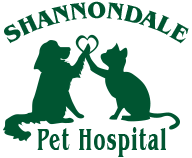Educational Articles
-
Special attention must be given to a dog's nutrition during her pregnancy to ensure the birth of healthy puppies. It is important to maintain a good body condition throughout pregnancy; this is achieved with regular monitoring. This handout outlines a pregnant dog’s unique nutritional needs and how to meet them, ensuring a healthy mother and pups.
-
Each dog is an individual and one standard feeding plan may not work for every pet, but following a set schedule can be beneficial for a number of reasons. For most dogs, two meals per day is best. The use of food toys or interactive feeders can add interest to your dog's mealtime. Routines help your dog adjust to changes that may occur in your home and allow you to monitor their health.
-
Selecting your dog’s food is a choice you make to support their health and well-being for each of their life stages. Complete and balanced commercial dog foods are designed to have specific nutrient profiles, and different diet types are available for healthy dogs or those with a medical condition. Your veterinarian is always ready to help you make the best nutritional choices for your dog.
-
Once your dog reaches adulthood, his nutrient profile changes from when he was a puppy. Your veterinarian can help you determine what proportion of each nutrient is needed based on your dog’s lifestyle and current body condition. Avoid free-feeding and work on a meal schedule. Following these steps can help your dog lead a healthier life and avoid becoming overweight or obese.
-
This handout discusses how to find reliable information for your pet on the internet. Recommendations are to always seek out trusted sources, such as your own veterinary clinic, veterinary schools, and those sites with content written by veterinarians. Try to avoid sites offering homemade cures, are heavily weighted with opinions, or offer prescription medications without requiring a veterinarian’s prescription.
-
Broken nails are acute, painful injuries that require first aid, and in some cases, a veterinary visit. Bleeding should initially be controlled with pressure from gauze or a towel, followed by cauterizing powder if needed. Any remaining damaged part needs to be removed, which usually requires veterinary care. Broken nails are best prevented by keeping all nails short through regular trimmings.
-
Dogs that fall from heights can suffer sprains, broken bones, head trauma, and chest or abdominal injuries. Toy breeds can sustain injuries from jumping off a couch or chair. If you see your dog fall, monitor him for at least 3-5 days for anything abnormal that may develop. Serious injuries need to be evaluated immediately by your veterinarian, but there are steps you can take at home to prepare your pet to be transported to your veterinary hospital.
-
Hot spots are inflamed and often painful lesions that your dog may develop for a variety of reasons. Treatment is relatively simple and may include the use of topical or oral steroids, antihistamines, bandaging the area, and using an E-collar to prevent further licking or chewing. If hot spots recur, it is important to determine the underlying cause. Seasonal grooming, regular brushing, and bathing can help prevent hot spots from developing.
-
Insect stings or bites can cause mild signs of swelling, pain, and itching or can be more severe causing hives, anaphylactic reactions, difficulty breathing, vomiting, diarrhea, or seizures. In more severe cases emergency veterinary attention is required to stabilize the dog, screen for organ dysfunction, and provide supportive care.
-
Lameness occurs due to the injury or debilitation of one or more parts of the leg: bones, muscles, nerves, tendons, ligaments, or skin. Depending on the cause of the limp, immediate veterinary care may be needed. If your dog is in severe pain, carefully transport your dog to your veterinary hospital or emergency hospital immediately. For non-emergency limps, you may be able to determine the cause of the limp and provide home care. If the lameness persists for more than 24 hours, seek veterinary care. Medication or surgery may be necessary to help your dog heal and reduce pain.


